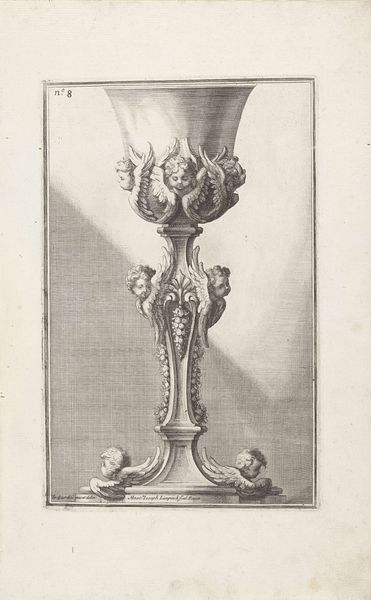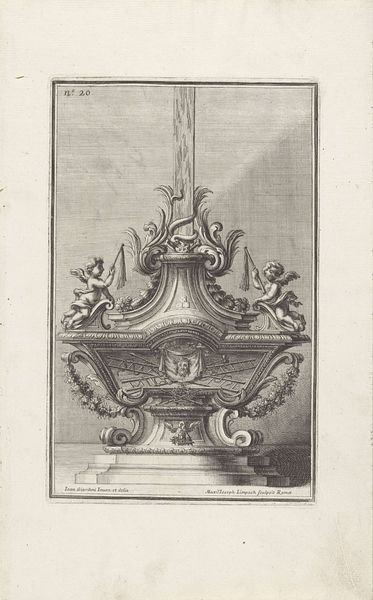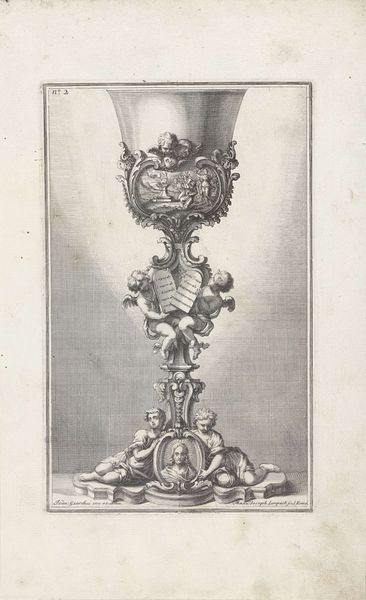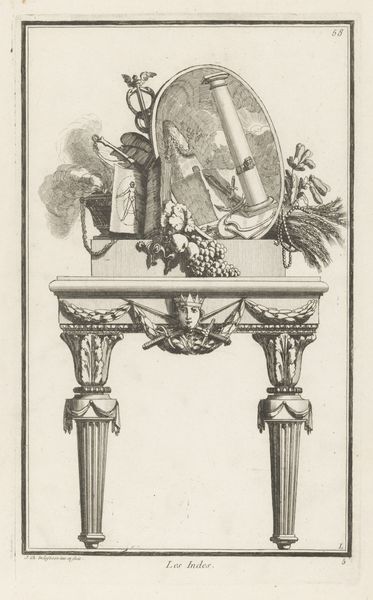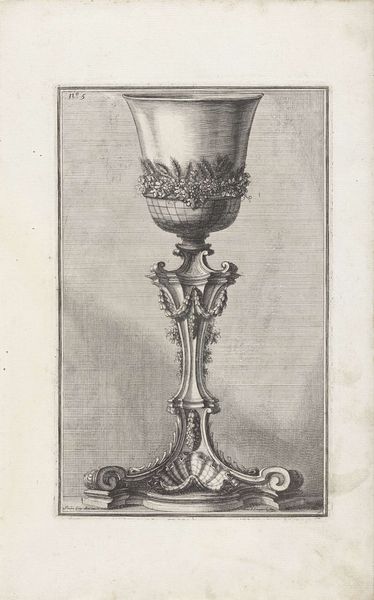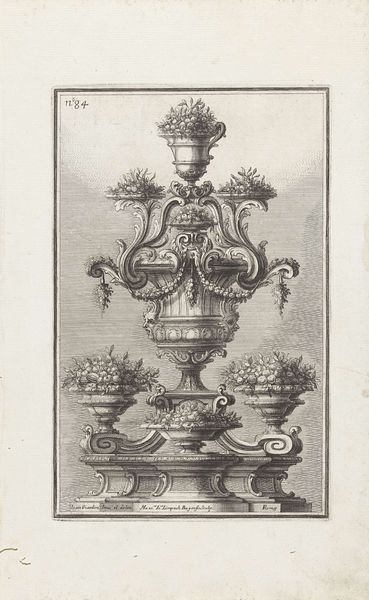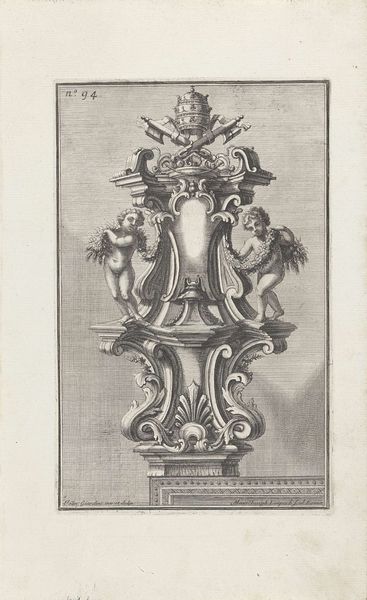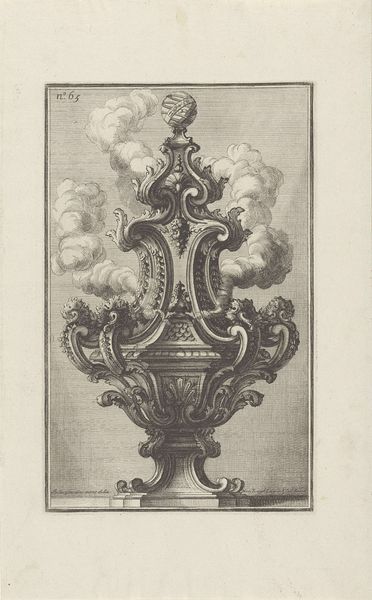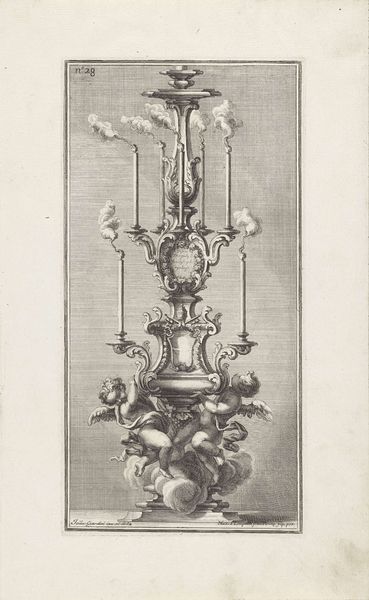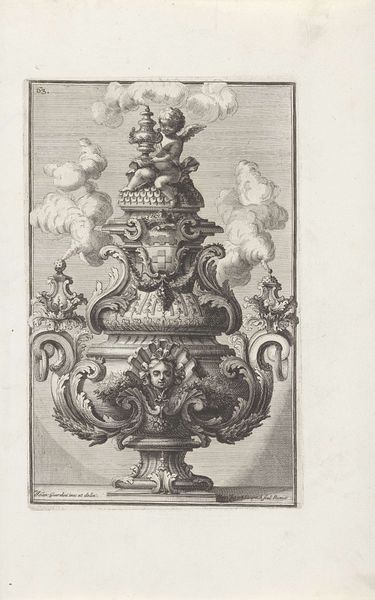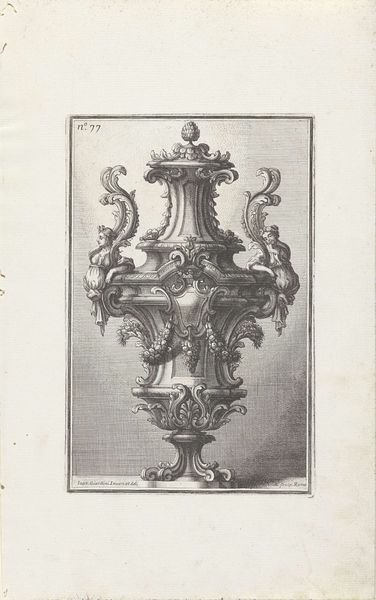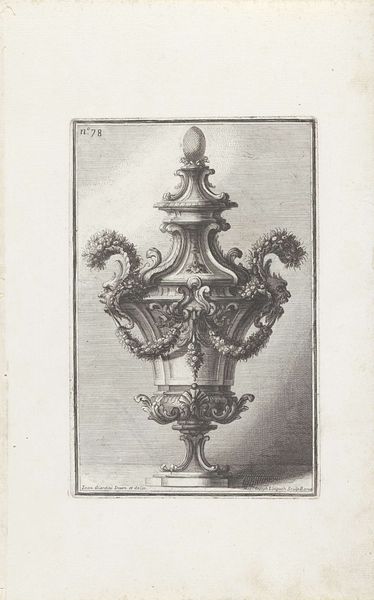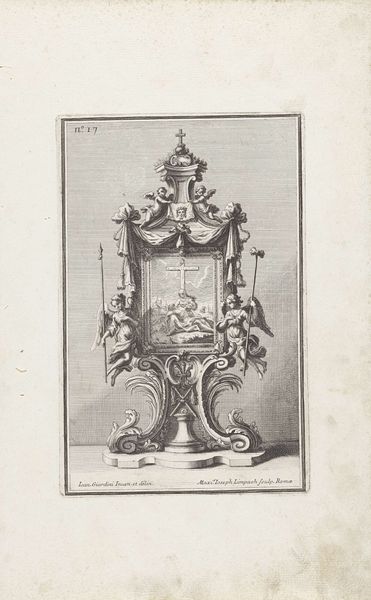
Kelk met palmtakken, guirlandes met vruchten en wijnranken 1714
0:00
0:00
maximilianjosephlimpach
Rijksmuseum
metal, engraving
#
baroque
#
metal
#
old engraving style
#
leaf
#
decorative-art
#
engraving
Dimensions: height 275 mm, width 174 mm
Copyright: Rijks Museum: Open Domain
Editor: So, here we have "Kelk met palmtakken, guirlandes met vruchten en wijnranken," an engraving dating back to 1714 by Maximilian Joseph Limpach. It's incredibly ornate, this metal chalice absolutely dripping with detail. I'm struck by the sheer opulence of it. What do you see in this piece beyond just the craftsmanship? Curator: The opulence you describe isn’t accidental; it's deeply embedded in the power structures of the Baroque period. These aren't just decorative elements; the palm branches, fruits, and vines are all signifiers. Consider the cultural and religious contexts: what would the abundance represented here mean to the elite versus the common person at that time? Is it simply celebratory, or is there something more insidious about such displays of wealth? Editor: That’s a really interesting point. I hadn't thought about it that way. I suppose I was initially just appreciating the aesthetic, but now I see how it could also be a symbol of inequality. The excess feels almost… aggressive. Curator: Exactly! Think about the role of the Church, the monarchy, and the aristocracy. Who was commissioning this kind of work, and what message were they trying to convey? Also, consider the symbolic weight of wine and fruit; it refers directly to fertility and Christian theology. Are women absent from the explicit iconography but implicit in its meaning? Editor: So, it’s less about the object itself and more about the power dynamics and social messaging it embodies? I guess it serves as a kind of... propaganda? Curator: "Propaganda" might be a bit strong, but certainly a visual assertion of status and divinely ordained privilege. By analyzing these elements, we can unpack not just the aesthetic qualities, but the complex intersection of religion, politics, and class. Does examining the piece in this new light shift your initial reaction to the piece? Editor: Absolutely. I went from admiring the detail to critically questioning the values it represents. I will definitely need to consider this perspective in the future. Thank you! Curator: And thank you, it’s refreshing to revisit how artworks, no matter how historical, resonate with contemporary struggles with inequality and power.
Comments
No comments
Be the first to comment and join the conversation on the ultimate creative platform.
